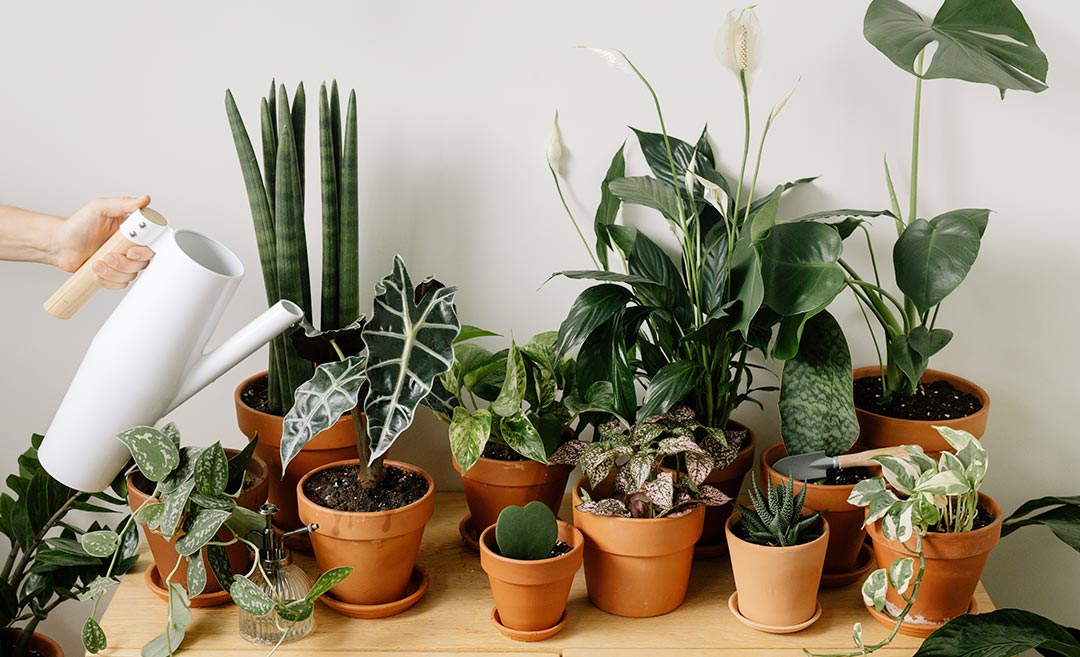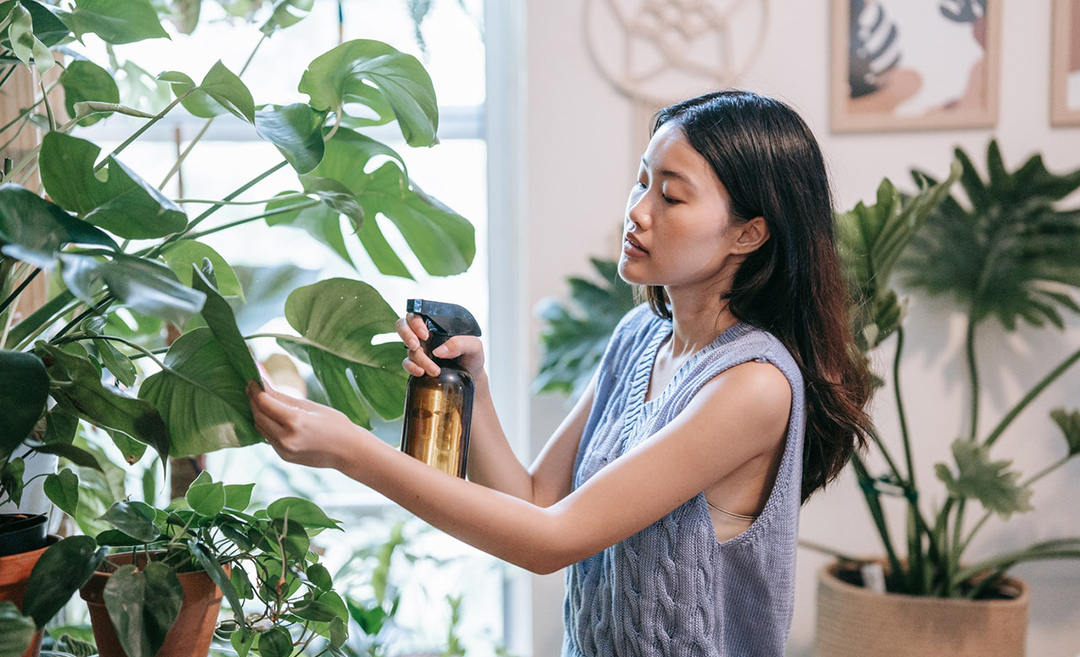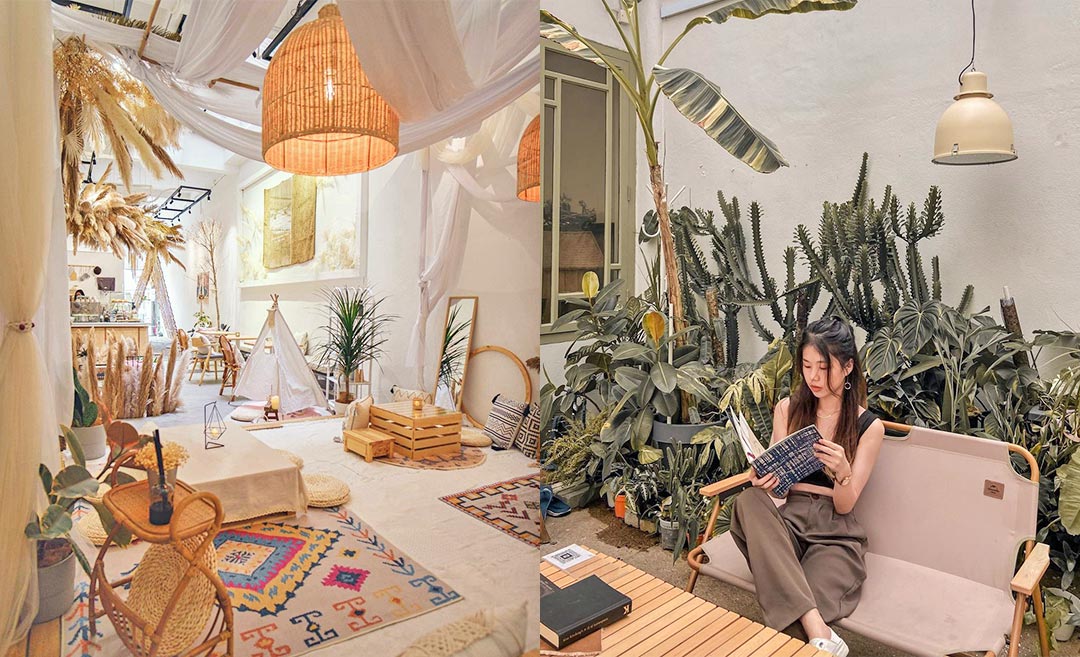Other than inviting their inherent ethereal and IG-certified beauty into your safe space, plants offer the added benefits of purifying the air and increasing oxygen levels for an overall tranquil ambience. Fair to say, this plays a major role in boosting one’s mood, productivity and creativity – what’s not to love, right?
However, many tremble with fear and anxiety at the thought of tending to them, seemingly denoting it to be an arduous, daunting task that threatens wilted blooms and decayed roots – in actuality, it isn’t as intimidating as it appears. The human senses, equipped with the right know-how, is all that’s needed to partake in this therapeutic practice, aside from the imperative combination of unwavering diligence, discipline, and patience.
Although green babies do not require as much attention as their human and furry, scaly, or feathery counterparts, they still need some TLC to help them flourish. With that said, here’s a simple breakdown of all the necessary information you need at your fingertips to help you unleash your inner green thumb:
Familiarise with your environment
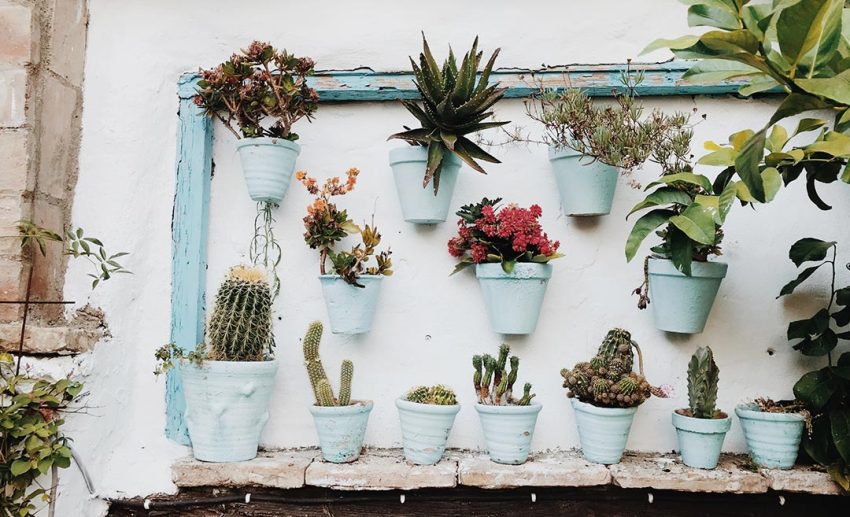
Before selecting your plant children and the pretty pots they will reside in, it is of the utmost pertinence that you become knowledgeable about the specific areas you plan to place them in. More accurately, take note of your home’s lighting conditions.
While the balcony and windowsill may be excellent locations, which supply plenty of sunlight, that corner in your living room may be too dim to do the same. If unsure of a certain area’s lighting intensity, we suggest using a special metre to accurately gauge how much light a particular space can provide.
However, those living in spaces with minimal natural lighting shouldn’t be discouraged in their plant-growing journey, as it’s all about getting creative and finding the right plant that can thrive in other types or intensities of light – especially low-light and fluorescent.
Get into stalk-er mode
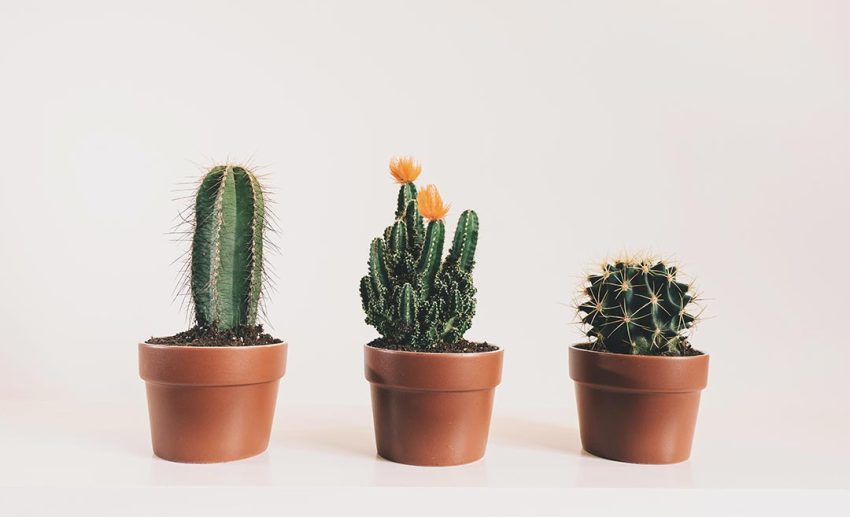
Just as each individual owns a unique set of personality traits along with a must-be-satiated list of needs and wants, so do your new green companions. Ergo, carefully research the specific ‘thriving’ – as this is way better than just ‘living’ – requirements of each plant you would like to own. From the type of soil to the amount of water required, plants can vary significantly on the kind of caretaking they need.
To increase the likelihood of extending your first plant’s lifeline, thus sustaining your hopes and interest in this endeavour, it is recommended to opt for those that require relatively low maintenance.
Such forgiving examples include pothos (nicknamed ‘Devil’s Ivy’ for its resistance to death), snake plant (sansevieria), cast irons (aspidistra elatior), peace lily (spathiphyllum), spider plant, and aloe vera along with cacti and succulents.
Moderation is key
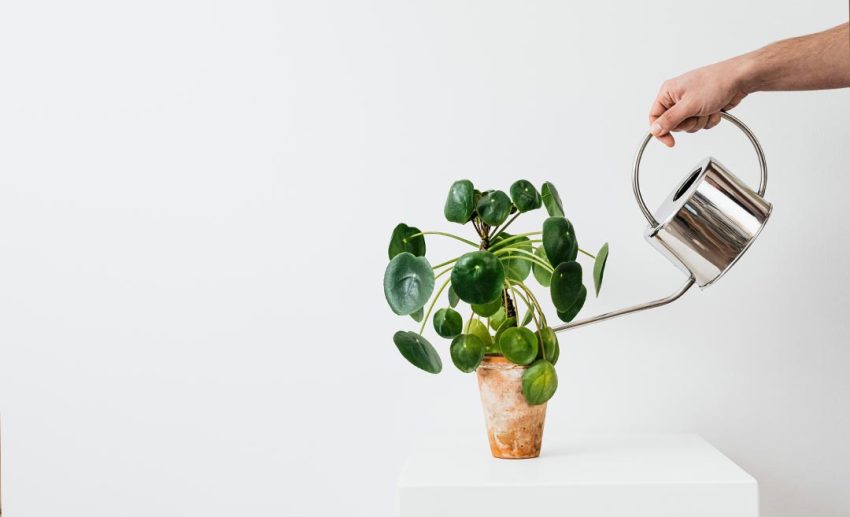
As we’ve already covered light as a necessary need, let’s talk about the water and soil, which make up the other two ingredients your plant child requires urgently – specifically, their potential to be mishandled without the right know-how.
Overwatering is a common rookie mistake that can lead to root rot, mainly when the plant receives less intense sunlight. As the peepers can be deceiving at times, stick a finger an inch deep into the soil to check if it’s truly damp or dry; leave the former alone and hydrate the latter.
A chopstick or gardening fork can also create air pockets in the soil before watering to allow even water distribution. In any case, try setting a watering schedule and sticking to it too.
As the limited space of a plant pot is rapidly depleted of macronutrients when a plant grows, it is crucial to replenish this loss of food in the form of fertiliser to ensure sustainable plant growth. With several varieties on the market, go for the all-purpose one for your very first plant to avoid under-feeding. However, keep in mind that fertilisers must also be used in moderation.
Side note: You can dust some crushed eggshells over the soil for added calcium!
Invest in the tools of the trade
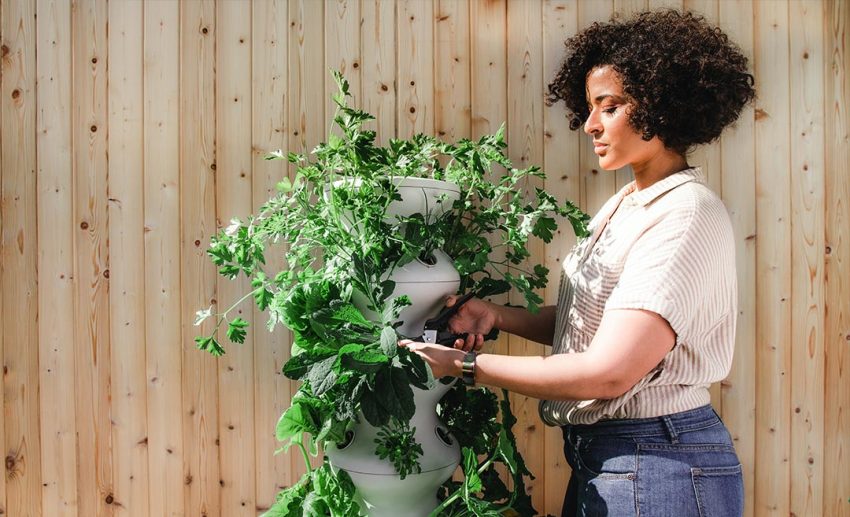
It is wise to pick up some essential gardening gear to help you provide a little added TLC for your green babies every now and then to help them flourish. While a long-spouted container will sufficiently do the trick instead of a watering can, you may need to invest in the right cutting tool according to the plant of choice.
Sorry, but regular scissors aren’t going to cut it – literally, as its multipurpose function makes it too dull for horticultural needs, causing longer healing periods. Plant pruners can be considered for larger tree-type plants while pruning scissors are best for harvesting flowers or herbs that require regular shearing and shaping.
Stay wary of plant addiction

Granted, this can be a relatively good sort of rabbit hole to fall into, BUT only when you’re no longer a novice in the plant care game. Therefore, try to avoid getting ahead of yourself by sticking with a plant or two for your first purchase and seeing how it goes from there.
Remember, going slow and steady is always the wiser move to help your green babies in the long run. Not to mention, your heart and wallet will thank you too.
If ever in doubt, let technology help you out

Allow your curiosities to run wild and have all your additional queries beyond this article answered by Google. More accurately, feel free to download PictureThis. This gardening app not only instantly identifies plants, flowers, and trees using an AI-driven system, but also offers diagnoses for plant issues, treatment suggestions, plant guides, growth chart records, and one-on-one advice sessions with expert botanists.
Available on the Apple Store and Google Play.
How to level up your plant-care game
Have a chit-chat with them

No, we haven’t lost our marbles. In fact, the UK’s leading gardening charity, the Royal Horticultural Society, found that conversing with plants really speeds up their growth process, especially if a female voice is carrying it. Whether you believe it or not, it certainly doesn’t hurt to try, as it can help alleviate stress and boost serotonin.
Find a new home
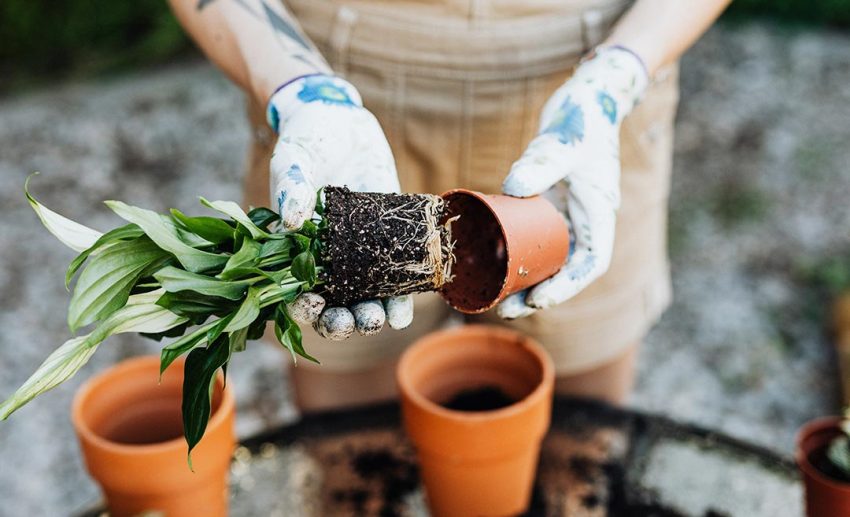
If the roots are growing through the drainage holes, guess what? It’s time for the necessary repotting stage. To be more precise, this is a telltale sign that your baby is developing quickly; hence a new and larger home is essential. Generally, young plants will typically require repotting every 12 to 18 months to replace nutrients from the old soil.
Spread the seed
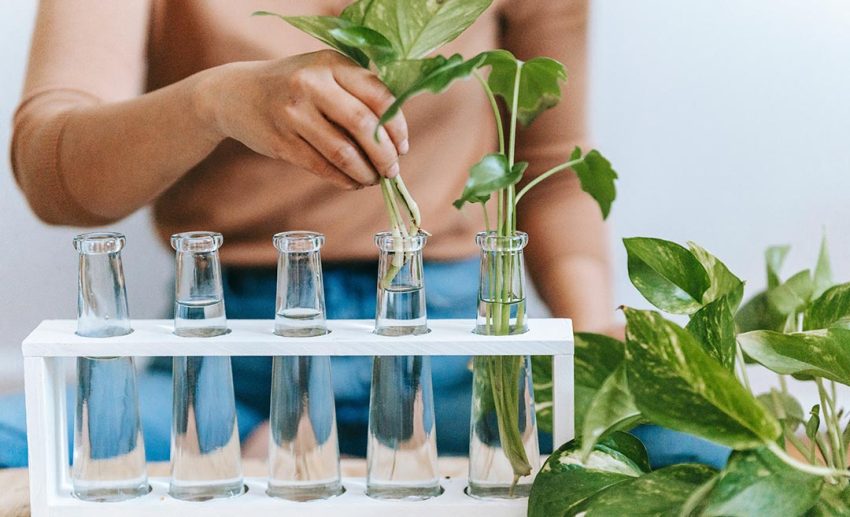
Instead of purchasing another pot of the same plant, try propagating instead. It is commonly conducted through two stem or leaf cuttings. Just submerge a piece of your plant in a glass of water and gently transfer it to a new soil once it develops its roots. This does take quite a bit of patience, but it is a cool experiment to pursue if your plant is as healthy as it can be.
Use recycling methods
Another cost-effective way to give your plant-child the nutrients they need is to get it from food waste such as cucumber peels, like in the video above. Not only will you minimise food going into the trash, but you can make an all-natural fertiliser, plant food, and the list goes on. Watch your plant thrive!

